Random variables
Random variables are functions from the sample space to the real line.
Probability space:
- Random variable
- Technical:
- Technical:
- Example: Toss a coin
- (1)
- Suppose coin lands
- (1)
- Example: Throw a fair die twice, outcome
- (1)
- (1)
Why random variables?
If outcome is very rich, study parts of it by defining random variables
- Example: IPL match, Outcome: Entire scorecard of a match (cricsheet.org)
- Difficult to define probability function for entire outcome
- A large number of random variables can be defined
- Runs scored in first ball, Target set, Number of wickets etc.


Distribution function of a random variable
Consider a random variable
Distribution Function of
-
Distribution function is commonly called Cumulative Distribution Function (CDF)
-
Example: Toss a coin,
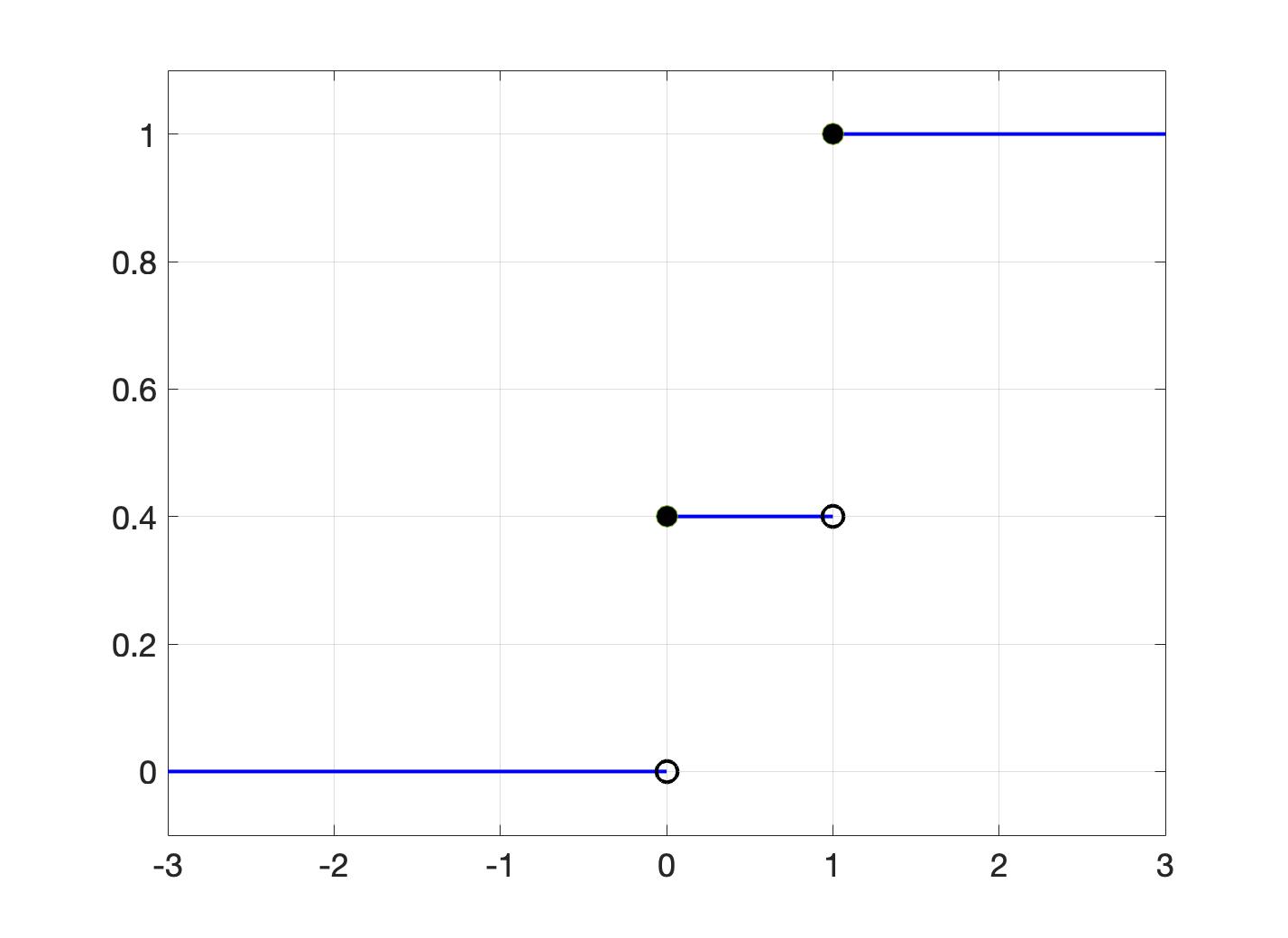
Examples of Distribution Functions
- Throw a fair die,
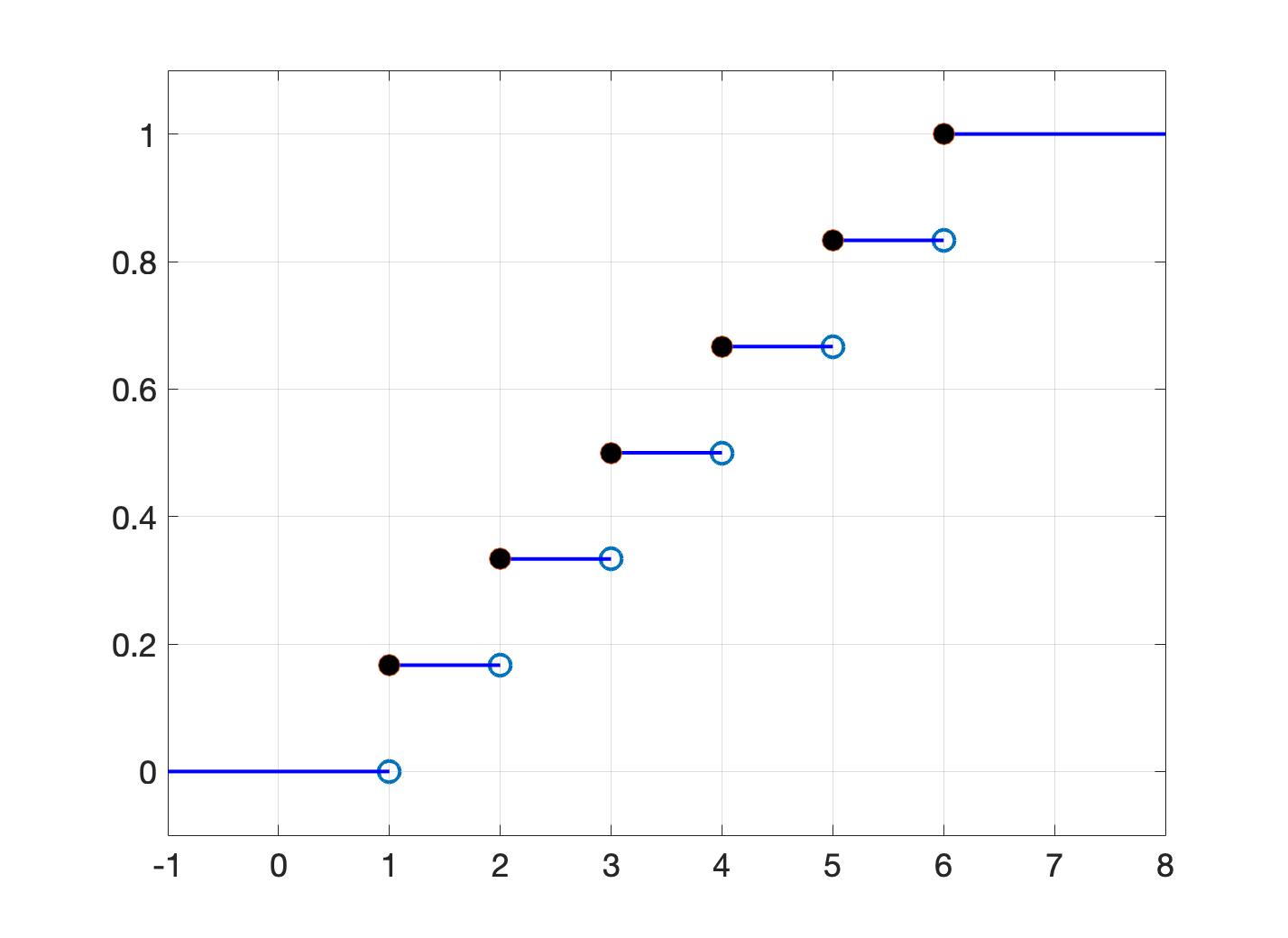
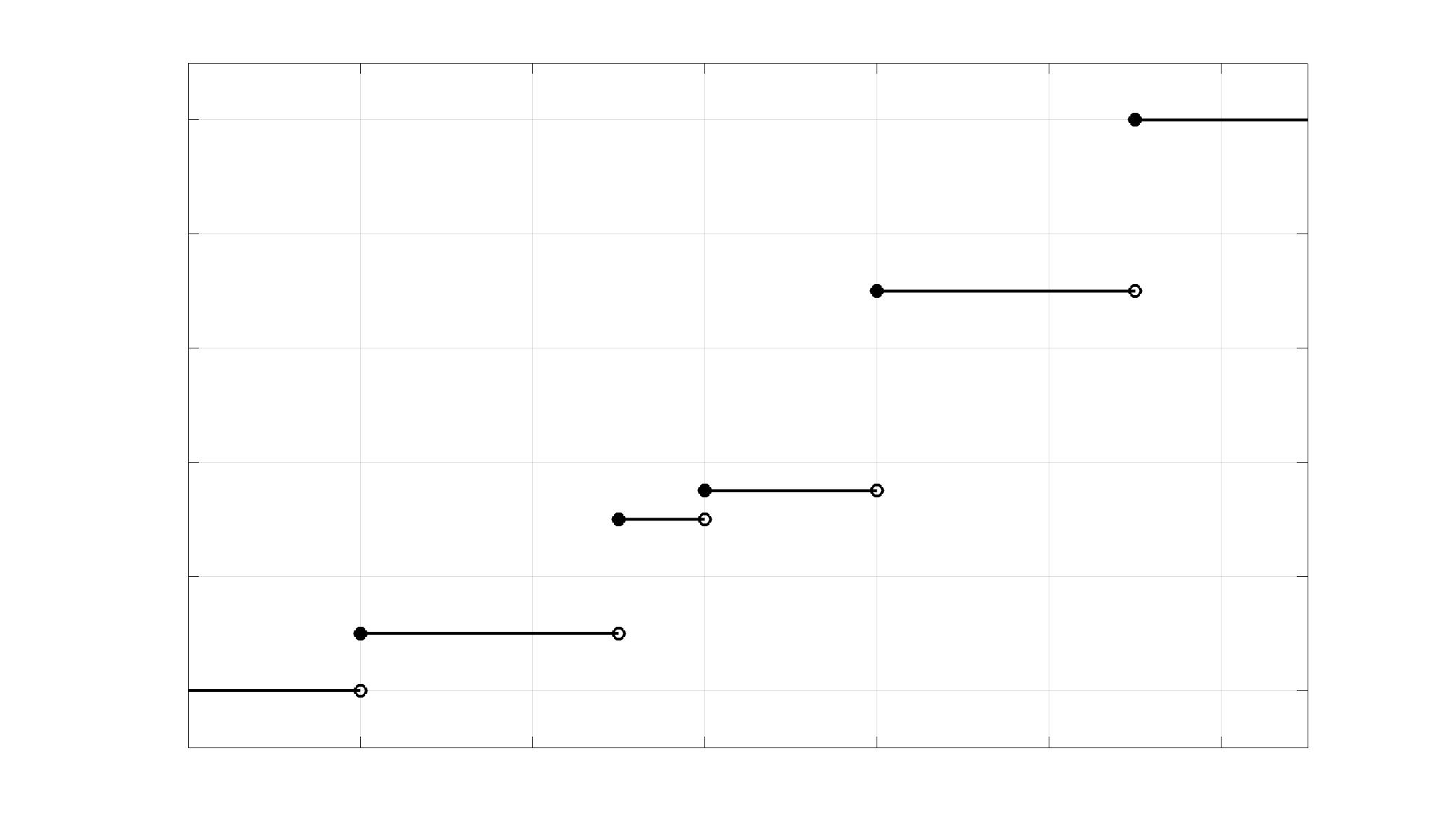
Properties of CDF
- So,
- Technical:
Discrete random variables
Discrete random variables take values in a discrete set
- Range of a random variable
- What is discrete? A partial definition....
- If
Probability mass function for discrete random variables
Consider a discrete random variable
Probability Mass Function (PMF) of
-
Example: Toss a coin,
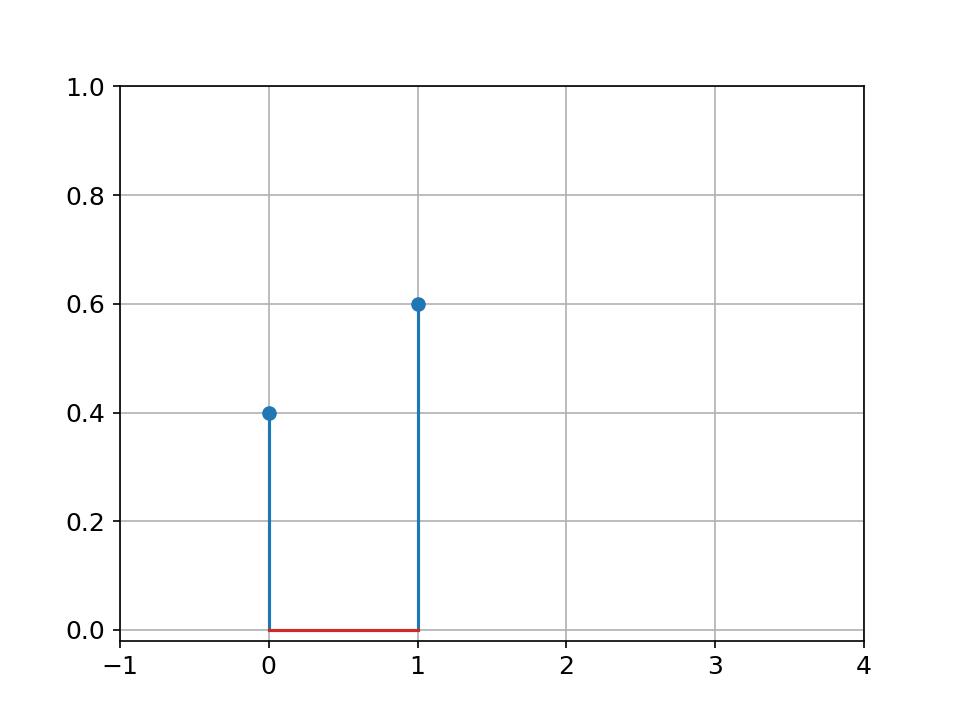
Examples of PMFs

Properties of PMF
Example: Throw a fair die twice, outcome
- Step 1:
- Step 2: For
- Step 1:
- Step 1:
- Step 2: For
- Step 1:
PMF
- CDF to PMF
- Step 1:
- Step 1:

- PMF to CDF
Discrete distributions: Bernoulli, Binomial
Some PMFs (or CDFs) occur commonly, and are named for ease of reference
- Indicator random variable of an event
- Indicator random variable of an event
- PMF:
- PMF:
Binomial: PMF, CDF
PMF:
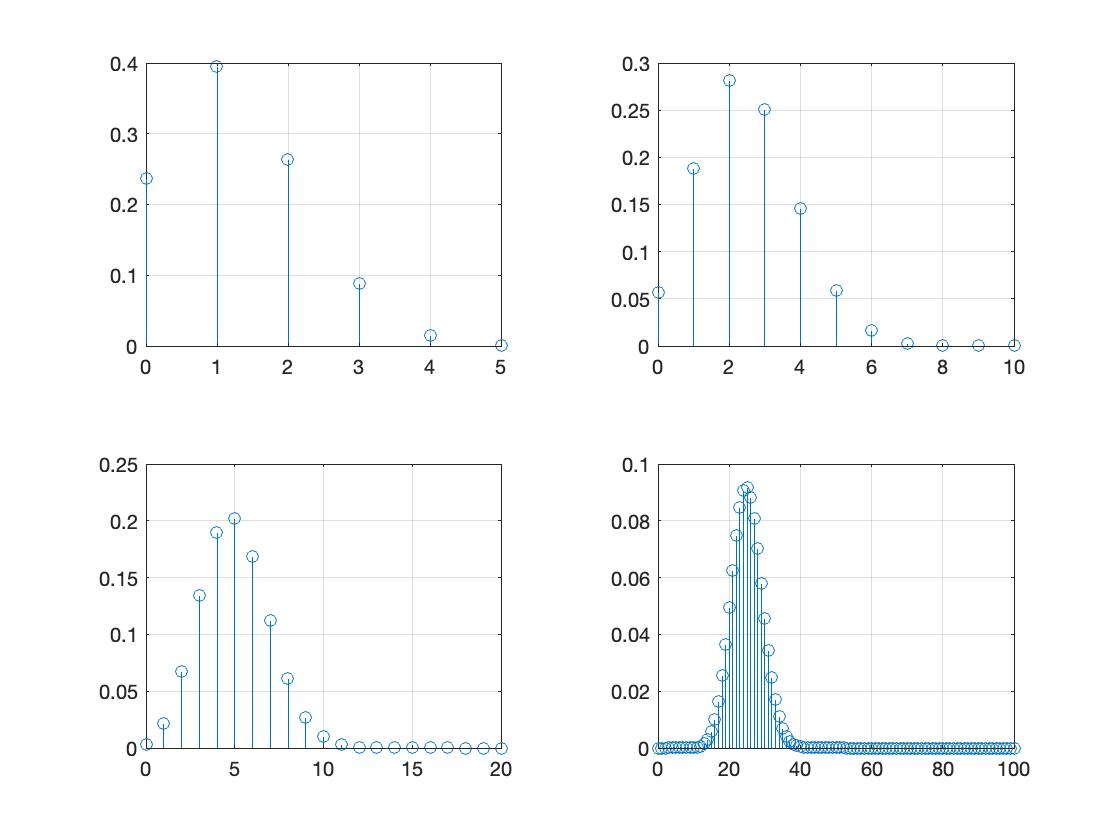
CDF:

Discrete distributions: Geometric, Poisson
- PMF:
- PMF:
- PMF:
- Poisson can be much more convenient that Binomial!
- PMF:
Geometric and Poisson PMFs
Geometric
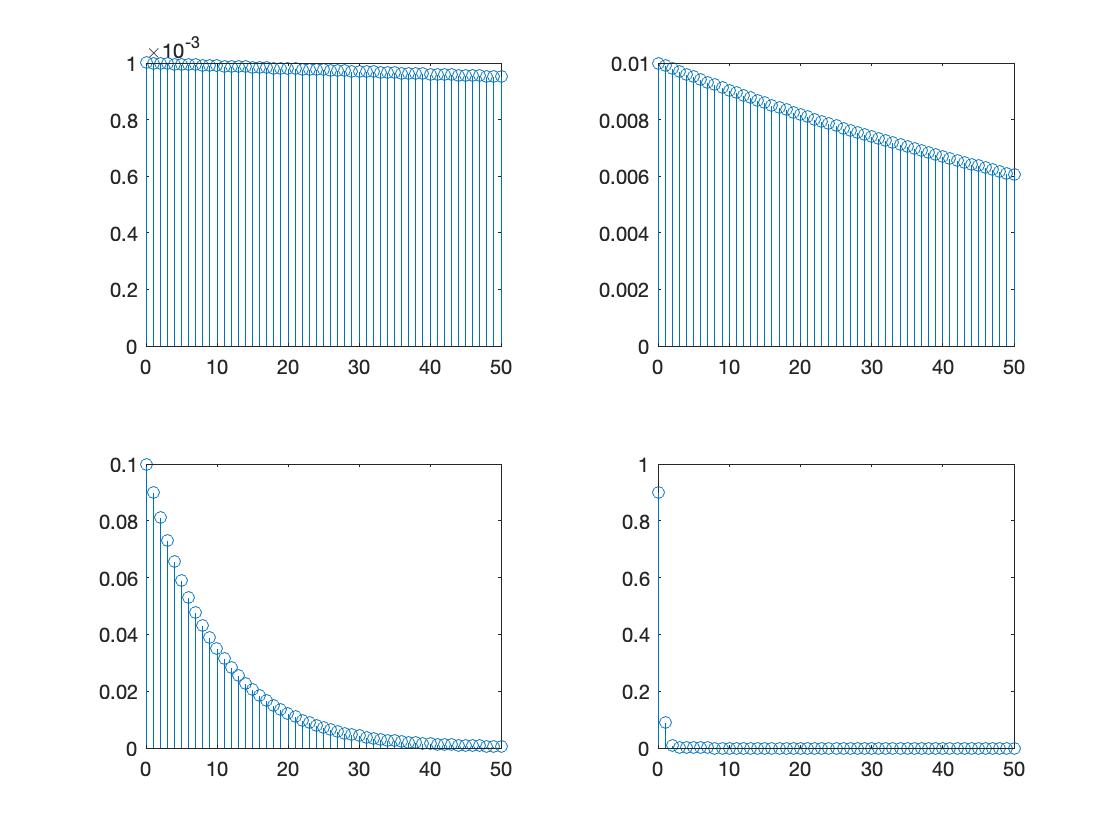
Poisson
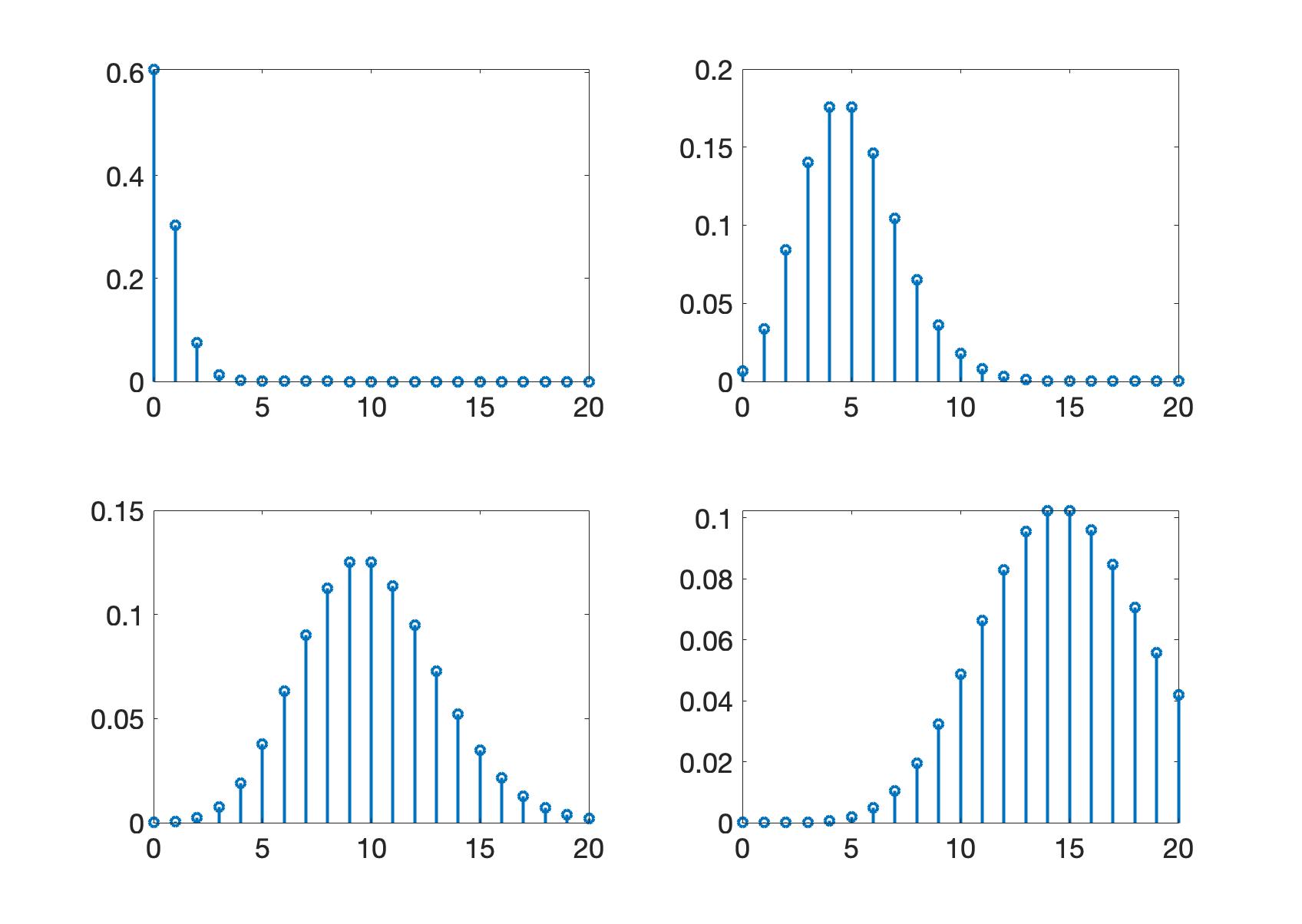
Discrete distribution with PMF
Given any valid PMF
-
What about the probability space needed for defining
-
For many textbook computations, the connection to a probability space is not necessary
- Quite often, random variables are defined vaguely as "algebraic variables taking random values"
-
In most real-life probabilistic models, random variables are defined in a probability space
- Computations without understanding the probability space can lead to faulty conclusions